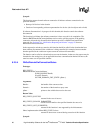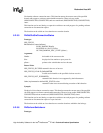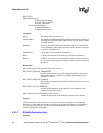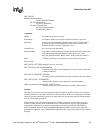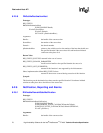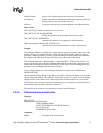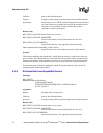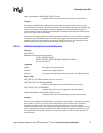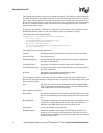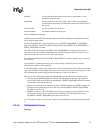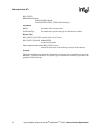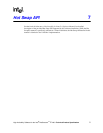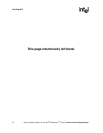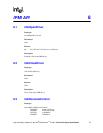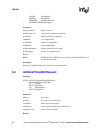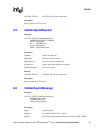
74 High Availability Software for the Intel
®
NetStructure
TM
ZT 4901 Technical Product Specification
Redundant Host API
The corresponding callback can be used to handle this situation. The callback is called with the bus
lock held. Parameters to the callback include a list of entries identifying domain devices in unsafe
states. These devices should be reset before the domain can be software connected and the device
drivers can be started. However, reset may not be necessary for a specific device if it is known that
this device is harmless for the system or the device driver can bring the device into a safe state
before the bus lock is cleared.
If registered, the callback is called after a switchover even if no devices are considered unsafe by
the RH infrastructure. In that case, the list of entries, passed as a parameter, is empty.
The callback has the following prototype:
typedef void (*RH_UNSAFE_SWITCHOVER_CALLBACK) (
IN uint32 Domain,
IN RH_SWITCHOVER_TYPE SwitchoverType,
IN BOOLEAN SlotResetSupported,
IN uint32 UnsafeSlotCount,
IN OUT RH_SLOT_DESCRIPTOR *pUnsafeSlotDescriptors,
IN void *pContext );
The callback has the following parameters:
Domain - the number of the domain that has been acquired by the current host
SwitchoverType the switchover type
SlotResetSupported the Boolean flag that indicates whether the infrastructure supports per-
slot resets on the domain
UnsafeSlotCount the number of descriptors for unsafe slots provided with the call
pUnsafeSlotDescriptors the array of descriptors, each of which describes one slot that contains a
device in unsafe state
pContext - the opaque context pointer passed unchanged from
RhEnableUnsafeSwitchoverNotification
Each descriptor describes a device that is directly installed in a physical slot or nested below a
physical slot in the PCI hierarchy (if the physical slot is occupied by a PCI-PCI bridge device), and
has the following fields:
Size - this is the size of the structure including the variable-length SlotPath
field. To get to the next structure in the array, the caller should add this
value to the address of the current structure.
Device addressing attributes:
PhysicalSlot the number of the physical slot in the format (shelf-ID, physical-slot-ID);
the device described by this descriptor resides in this slot or below this
slot
PhysSlotDepth The number of bridging levels between this device and the physical slot;
if the device occupies the physical slot, this value is 0, otherwise it
indicates is the depth of the device below the physical slot
OwningHost is set to the number of the current host
RootBusNumber the PCI bus number of the root bus of the PCI hierarchy the device
resides in; is 0 for single-root PCI hierarchies. This value is 16 bit to
accommodate possible future extensions to PCI that allow more than 256
PCI buses in the system



